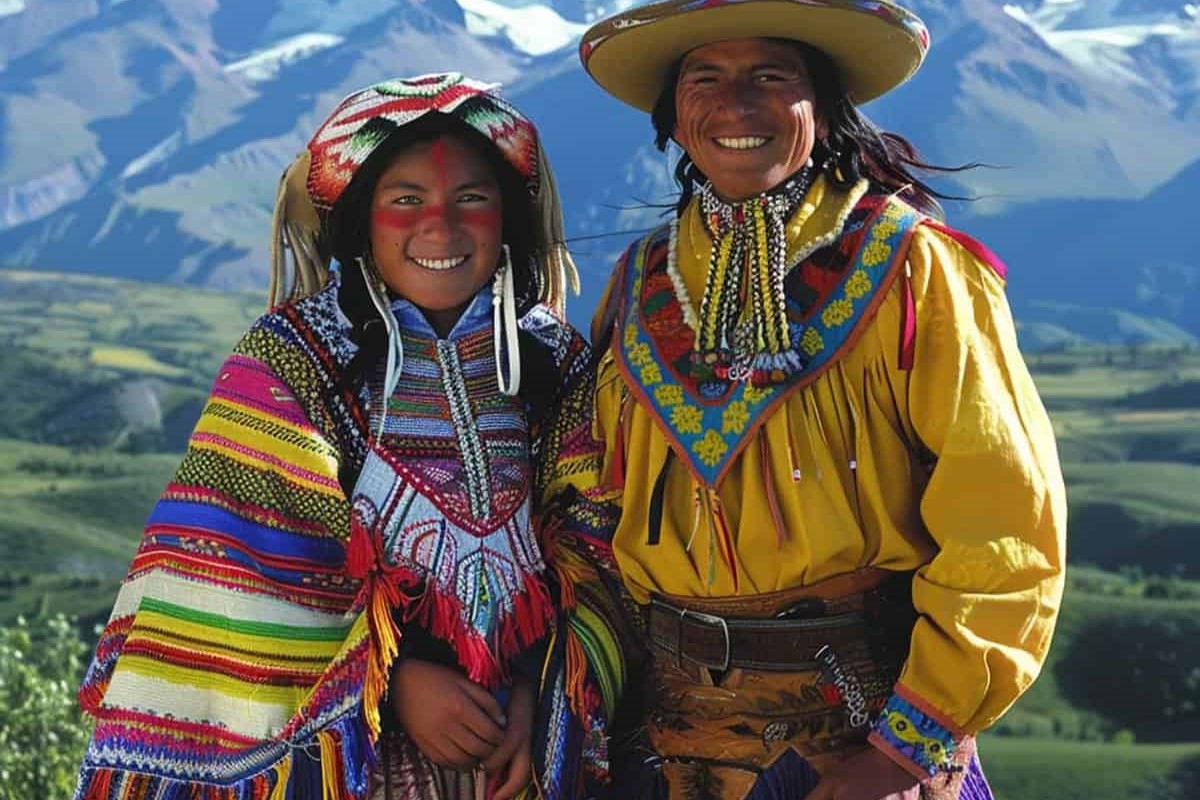Secrets Behind Chilean Traditional Dress

Have you ever wondered about the traditional dress of Chile? These vibrant outfits tell stories of history, culture, and pride. The Chilean traditional dress varies across regions, each with unique elements. In central Chile, the huaso attire stands out, featuring a wide-brimmed hat, poncho, and boots. Women often wear colorful dresses with ruffles, perfect for the lively cueca dance. In the south, the Mapuche people showcase their heritage with woven garments and silver jewelry. Each piece of clothing reflects the diverse influences that have shaped Chile over centuries. Ready to learn more about these fascinating garments? Let's dive in!
The Charm of Chilean Traditional Dress
Chilean traditional dress reflects the country's rich history and diverse culture. Each region boasts unique styles, colors, and patterns that tell stories of their heritage. Let's explore some of the most iconic traditional outfits from various parts of Chile.
Huaso Attire
The Huaso attire is perhaps the most recognized traditional dress in Chile. Worn by cowboys in the central region, this outfit is both practical and stylish.
- Chamanto: A reversible poncho with intricate designs, often featuring flowers and geometric patterns.
- Chupalla: A straw hat with a wide brim, perfect for shielding from the sun.
- Espuelas: Spurs worn by horse riders, adding a touch of authenticity to the ensemble.
- Botines: Leather boots that are both durable and comfortable for long rides.
Mapuche Traditional Dress
The Mapuche people, indigenous to southern Chile, have a distinct and beautiful traditional dress. Their clothing is rich in symbolism and craftsmanship.
- Trarilonco: A headband made of silver coins, representing wealth and status.
- Küpam: A long, woolen dress often adorned with colorful embroidery.
- Traripel: Silver jewelry, including necklaces and earrings, that signify cultural identity.
- Makun: A woven shawl used for warmth and decoration.
Chilote Attire
From the Chiloé Archipelago, Chilote attire is designed to withstand the region's harsh weather. It combines practicality with cultural elements.
- Chilote Poncho: Made from thick wool, this poncho provides excellent protection against the cold.
- Chilote Cap: A knitted woolen cap that keeps the head warm during chilly days.
- Ropa de Lana: Woolen clothing, including sweaters and pants, essential for the island's climate.
- Chilote Shoes: Handcrafted from leather and wool, these shoes are both sturdy and comfortable.
Aymara Traditional Dress
The Aymara people, native to the northern Andes, have a vibrant and colorful traditional dress. Their attire reflects their connection to nature and spirituality.
- Aksu: A brightly colored dress, often featuring intricate patterns and designs.
- Montera: A hat decorated with feathers and beads, symbolizing various aspects of Aymara culture.
- Chuspa: A small woven bag used to carry coca leaves and other essentials.
- Aymara Poncho: A colorful poncho that provides warmth and showcases traditional weaving techniques.
Rapa Nui Traditional Dress
On Easter Island, the Rapa Nui people have a unique traditional dress that reflects their Polynesian heritage. Their clothing is often used in cultural ceremonies and dances.
- Hami: A loincloth made from natural fibers, worn by both men and women.
- Pareo: A wraparound skirt, often featuring bold and vibrant patterns.
- Feather Headdresses: Elaborate headpieces made from bird feathers, used in traditional dances.
- Tapa Cloth: A fabric made from tree bark, used for various ceremonial garments.
Embracing Chilean Culture Through Traditional Dress
Chilean traditional dress offers a vivid glimpse into the country's rich heritage. Each piece, from the Chamanto to the Huaso hat, tells a story of history, culture, and identity. These garments aren't just clothes; they represent the spirit of Chile. Whether you're attending a Fiestas Patrias celebration or exploring local markets, wearing traditional attire connects you to the heart of Chilean culture. It's a way to honor the past while celebrating the present. Next time you visit Chile, consider donning a Poncho or Pollera. You'll not only look the part but also feel a deeper connection to the vibrant traditions that make Chile unique. Embrace the colors, patterns, and history woven into every thread. By doing so, you become part of the ongoing story of Chilean culture.

